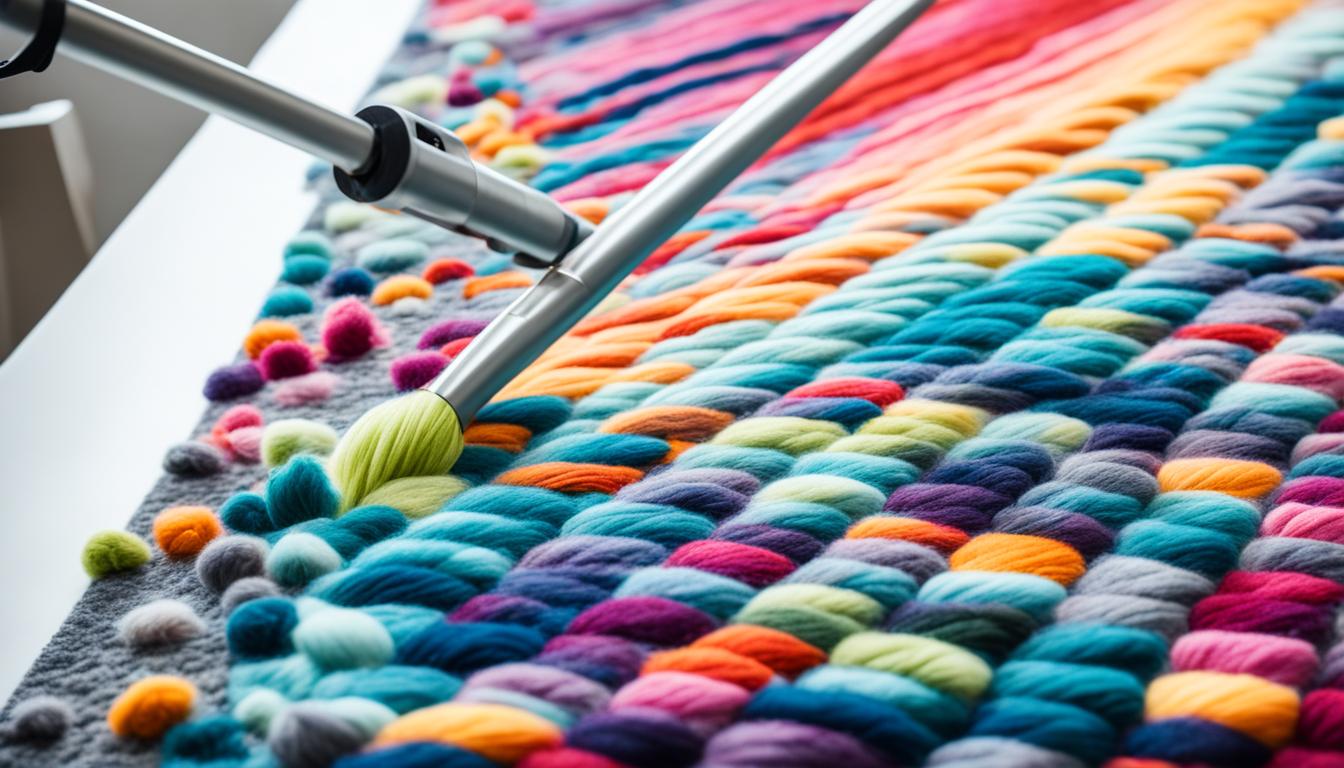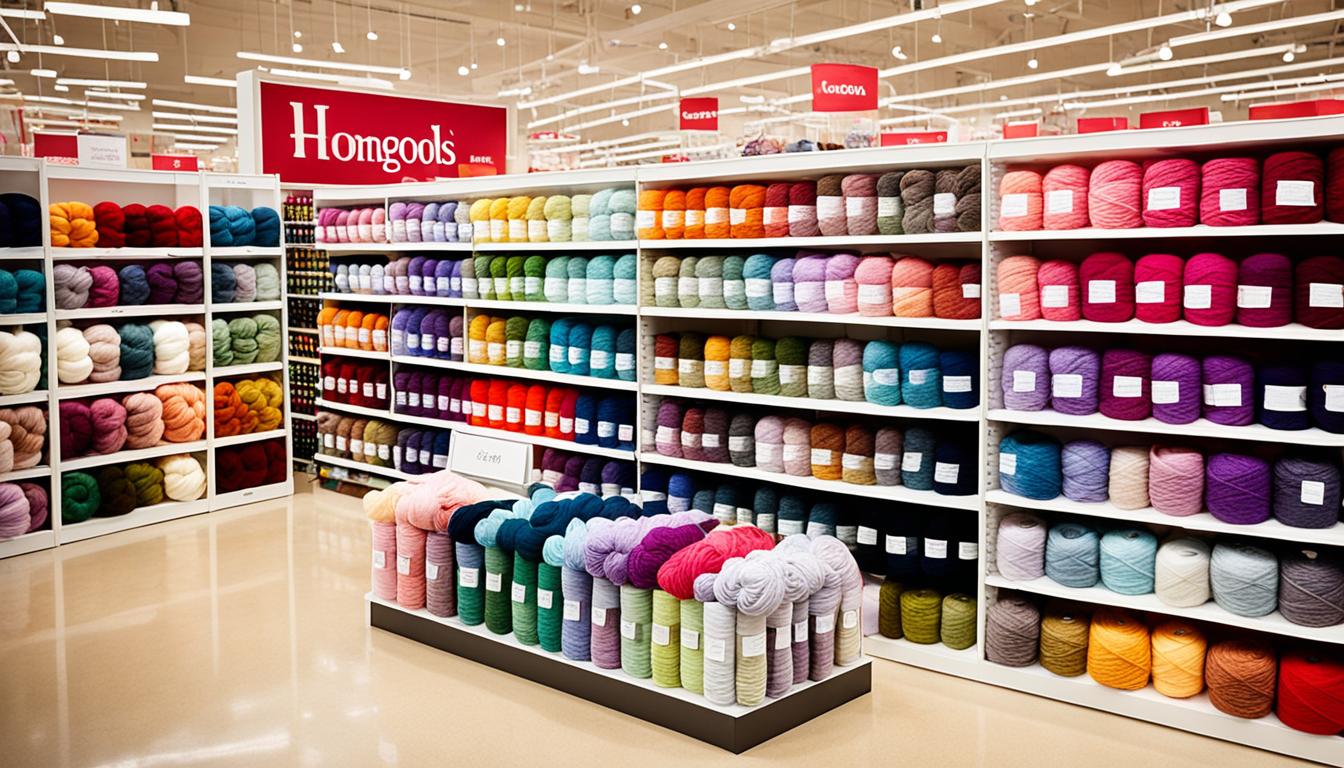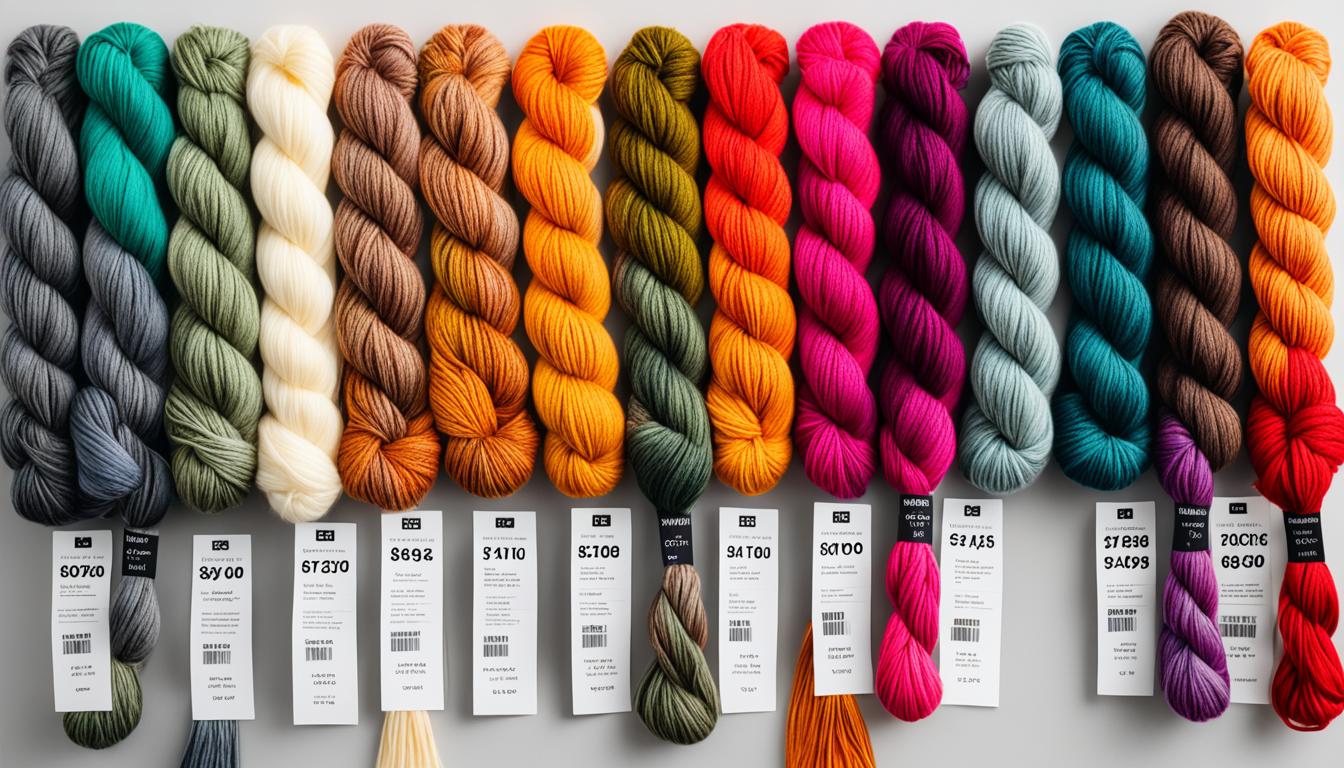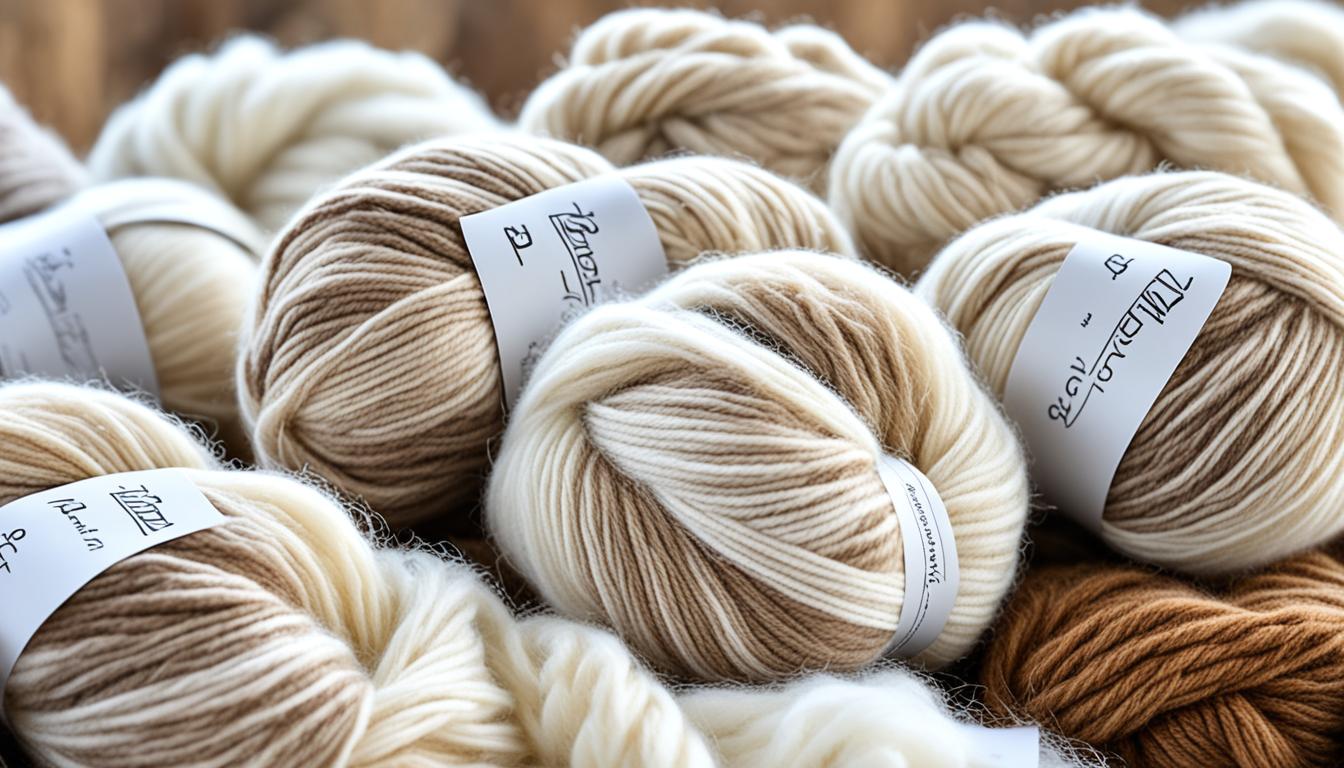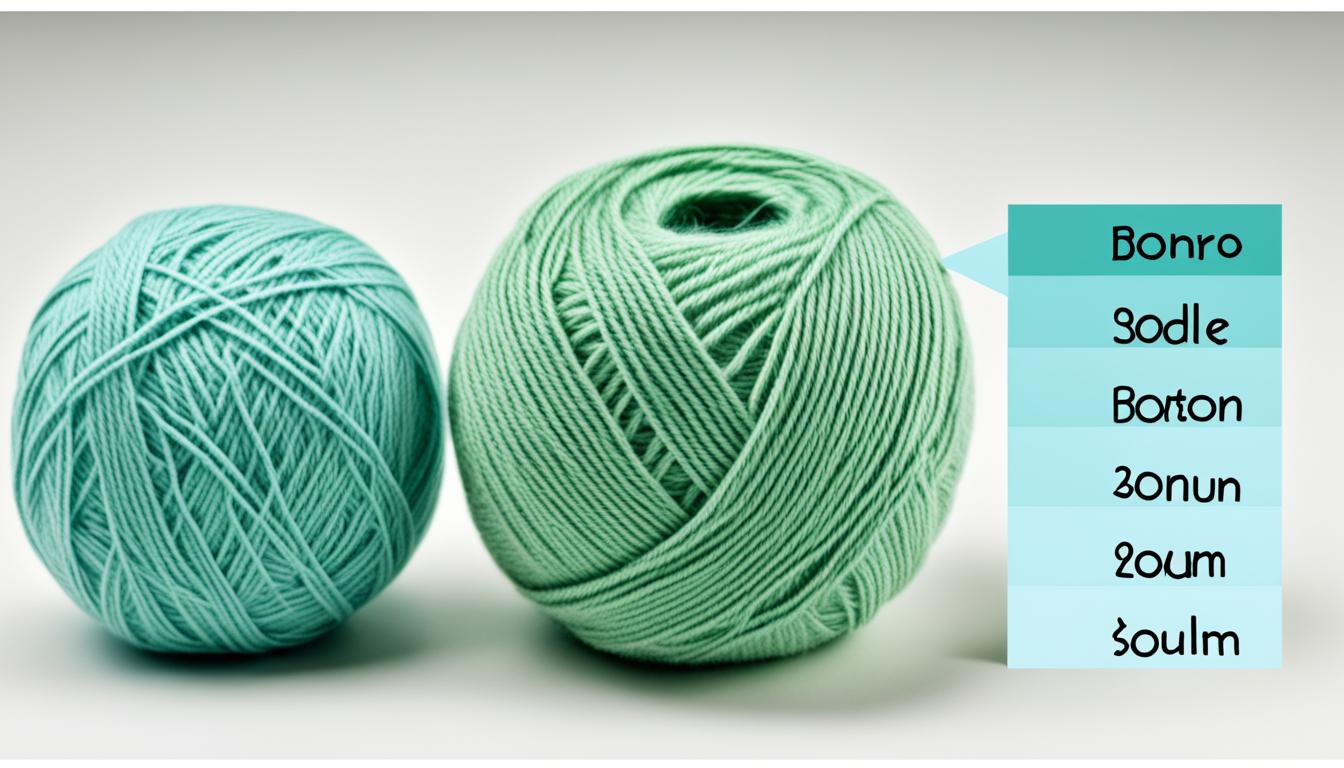Are you prepared to start a creative adventure by crafting your own distinctive rugs? The craft of rug tufting provides numerous opportunities for crafting gorgeous and long-lasting rugs that showcase your individual style. The important question is: Which type of yarn is best for rug tufting?
Choosing the right yarn is crucial, as it directly affects the texture, durability, and overall look of your tufted rug. There are various types of yarn to consider, including acrylic, cotton, and wool. Each has its own unique characteristics and is suitable for different types of projects.
In this article, we’ll explore the best yarn options for rug tufting, sharing our top picks and expert tips along the way. Whether you’re a beginner or an experienced rug tufter, we’ve got you covered!
Key Takeaways:
- Acrylic yarn is affordable, soft, and ideal for ornamental rug projects.
- Cotton yarn is versatile, environmentally sustainable, and suitable for both wall pieces and rugs.
- Wool yarn is the most durable and traditional choice, perfect for floor rugs.
- Consider the purpose and desired qualities of your rug when choosing the yarn.
- Experiment and enjoy the process of creating your own unique tufted rugs!
Acrylic Yarn for Rug Tufting
When it comes to rug tufting, choosing the right yarn is essential to achieve the desired results. Acrylic yarn is a popular choice among tufting enthusiasts due to its affordability and softness. It is readily available at craft stores such as Michaels and Walmart, making it easily accessible to all.
Although acrylic yarn may not be as durable as other options, it offers its own unique advantages. It is best suited for non-floor pieces, as it is relatively flimsy and does not hold its structure well under heavy foot traffic. However, acrylic yarn shines when used for ornamental projects and decorative rugs that are meant to be seen and appreciated rather than subjected to wear and tear. Its softness and variety of colors make it a cost-effective choice for adding a vibrant touch to your creations.
One thing to keep in mind is that acrylic yarn has a nice grain to it, which can enhance the overall texture of your rug tufting project. This allows you to achieve depth and visual interest in your designs, making your rugs truly stand out. So, if you’re looking for an affordable and versatile option for your tufting endeavors, acrylic yarn is definitely worth considering.
https://www.youtube.com/watch?v=xAksBXakyAg
Why Choose Acrylic Yarn?
1. Affordability: Acrylic yarn is cost-effective, making it a budget-friendly choice for rug tufting projects.
2. Softness: The soft and cozy feel of acrylic yarn adds comfort and warmth to your rugs.
3. Variety: Acrylic yarn comes in a vast range of colors, allowing you to unleash your creativity and bring your designs to life.
4. Grain: The nice grain of acrylic yarn adds texture and depth to your tufted rugs, making them visually appealing.
5. Accessibility: Acrylic yarn is widely available at craft stores, making it convenient for artists and hobbyists to source.
Quotes about Acrylic Yarn for Rug Tufting
“Acrylic yarn is my go-to choice for rug tufting projects. It’s affordable, soft, and offers a wide range of colors which adds vibrancy to my designs.” – Jane, Rug Tufting Enthusiast
Best Acrylic Yarn Brands for Rug Tufting
| Brand | Description |
|---|---|
| Red Heart Super Saver Yarn | Known for its versatility and wide color range, Red Heart Super Saver Yarn is a popular choice among rug tufting enthusiasts. |
| Bernat Blanket Yarn | With its soft and cozy texture, Bernat Blanket Yarn is perfect for creating warm and inviting rugs. |
| Lion Brand Yarn | Lion Brand offers a variety of acrylic yarns suitable for rug tufting, including their popular Vanna’s Choice and Basic Stitch. |
Remember, while acrylic yarn may not be the most durable option for floor rugs, it offers a wide range of creative possibilities for non-floor pieces. It’s a great choice for bringing color, softness, and texture to your rug tufting projects. So, unleash your creativity and start exploring the world of acrylic yarn in rug tufting!
Cotton Yarn for Rug Tufting
When it comes to rug tufting, cotton yarn is another fantastic option to consider. It offers a moderate level of softness, making it comfortable to touch and walk on. Additionally, cotton yarn holds its shape well, ensuring that your tufted rugs maintain their structure over time.
What sets cotton yarn apart from other options is its eco-friendly nature. As a natural fiber, cotton is a sustainable choice that minimizes environmental impact. This makes it an excellent option for those who prioritize sustainability in their crafting projects.
Cotton yarn is readily available in a variety of colors and textures. You can easily find high-quality cotton yarn at an affordable price, allowing you to experiment with different designs and patterns without breaking the bank.
One of the key advantages of cotton yarn for rug tufting is its ability to handle water well. Unlike acrylic yarn, cotton yarn can withstand moisture, making it suitable for floor rugs. However, it’s important to note that excessive trampling on cotton rugs can cause the fibers to collapse over time. So, while cotton yarn is suitable for floor rugs, it’s always best to use rugs with care to ensure their longevity.
Overall, cotton yarn offers a balance of quality, durability, and eco-friendliness, making it a popular choice for various rug tufting projects. Its versatility and ability to handle water well make it a reliable option for both wall pieces and floor rugs. Consider incorporating cotton yarn into your rug tufting projects to create beautiful and sustainable masterpieces.
Pros of Cotton Yarn:
- Moderate softness
- Excellent shape retention
- Eco-friendly and sustainable
Cons of Cotton Yarn:
- Fibers may collapse with excessive trampling
Now that we’ve explored cotton yarn for rug tufting, let’s move on to another popular option – wool yarn.
| Cotton Yarn | Acrylic Yarn | Wool Yarn | |
|---|---|---|---|
| Softness | Moderate | Soft | Rough |
| Shape Retention | Excellent | Poor | Excellent |
| Eco-Friendly | Yes | No | No |
| Water Resistance | Good | Poor | Poor |
*All values are subjective and may vary based on specific yarn brands and characteristics.
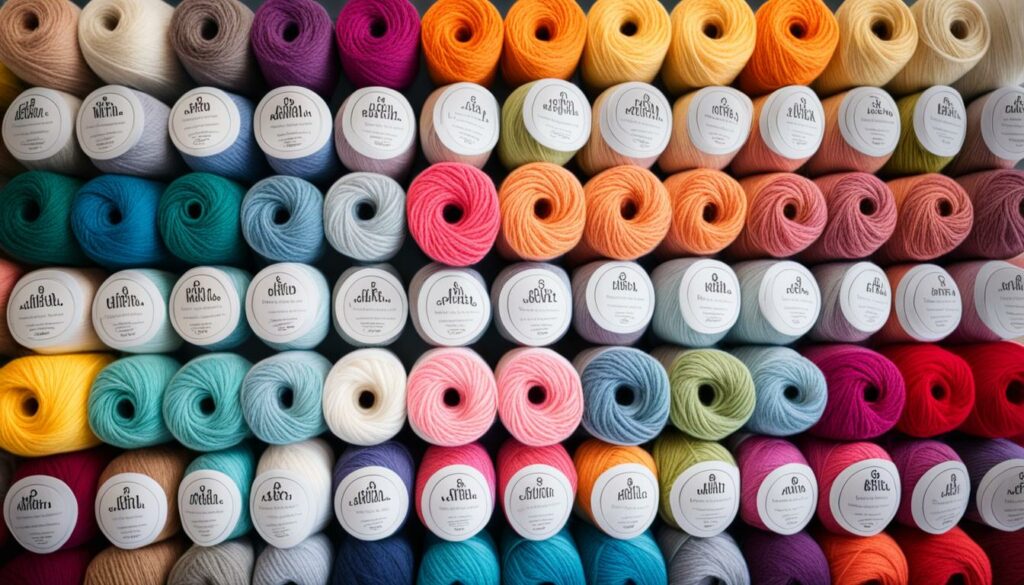
Wool Yarn for Rug Tufting
When it comes to rug tufting, wool yarn reigns supreme. With its rigidity, rough texture, and exceptional durability, wool is the traditional choice for creating long-lasting and resilient rugs. Unlike acrylic or cotton yarn, wool can hold its shape even with regular foot traffic, making it ideal for floor rugs that require sturdiness.
Although wool yarn may be more expensive compared to other options, its superior quality and longevity justify the investment. Whether you’re crafting a functional floor rug or an art piece, using wool yarn ensures a high-quality end result that will stand the test of time.
When selecting wool yarn for rug tufting, consider the unique qualities it offers. Its coarse texture adds character and depth to the rug, providing a visually appealing and tactile experience. Additionally, wool has excellent insulation properties, meaning your wool tufted rug will feel cozy and warm underfoot.
To further enhance the beauty and functionality of your rug, you can choose from a wide range of natural and dyed wool yarn colors. From earthy neutrals to vibrant hues, the versatility of wool allows you to create rugs that complement any interior style.
It’s important to note that wool yarn might not be suitable for those on a tight budget. However, if your budget allows, investing in wool yarn for rug tufting will result in high-quality, long-lasting rugs that will bring warmth and beauty to your space for years to come.
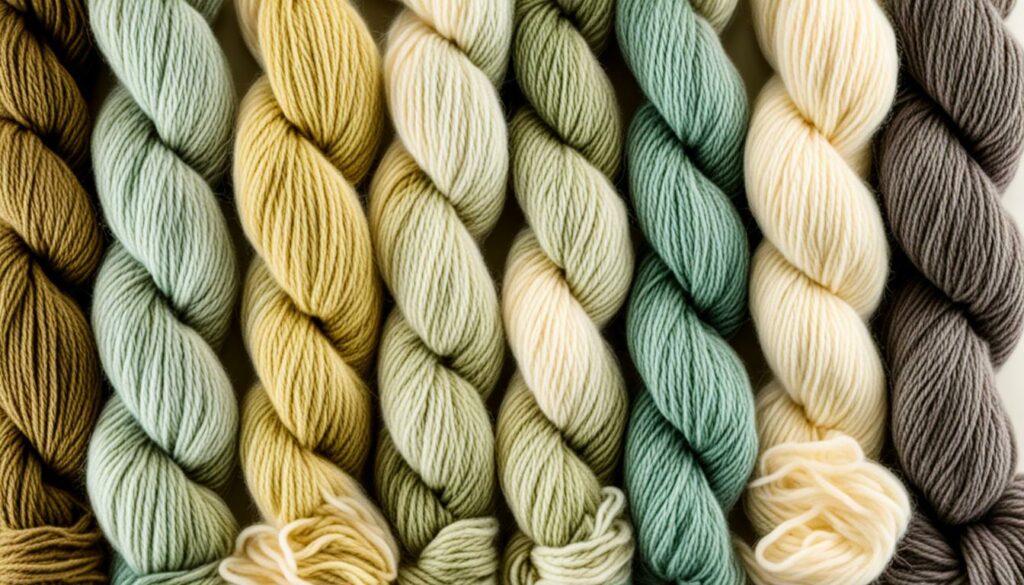
Benefits of Wool Yarn
“Wool yarn is the go-to choice for rug tufting due to its remarkable durability and traditional appeal. Its coarse texture and excellent insulation properties make it ideal for creating rugs that are not only visually stunning but also functionally superior.”
- Exceptional durability
- Coarse texture for added character
- Excellent insulation properties
- Wide range of natural and dyed colors
Tips for Using Wool Yarn in Rug Tufting
- Select a suitable tufting gun with a hole size that accommodates wool yarn.
- Use multiple strands of wool yarn to create denser and more robust tufts.
- Experiment with different tufting techniques to achieve the desired texture and visual effect.
- Consider pre-washing and blocking your wool yarn before tufting to minimize shrinkage and ensure consistent results.
With its unmatched durability, texture, and insulation properties, wool yarn is undoubtedly the best choice for rug tufting. Incorporating wool into your rug tufting projects will result in beautiful, long-lasting rugs that add warmth and elegance to any space.
Choosing the Right Size Yarn
When it comes to rug tufting, the size and thickness of the yarn play a crucial role in achieving the desired results. While the numerification system and weight value of yarns can be complex, the most important consideration is the size of the tufting gun’s hole. To ensure consistent tufts and prevent slipping after each stroke, it’s essential to fill the tufting gun with enough yarn.
Thicker yarn, such as 3 or 4-ply, is recommended for rug tufting. The added thickness creates denser and more consistent tufts. If you’re using thinner yarn, you can still achieve the desired density by using multiple strands. Simply work with two strands of yarn at a time to compensate for the thinner gauge.
Opting for the right size yarn ensures that your tufted rugs are durable and visually appealing. By paying attention to the thickness and utilizing multiple strands if needed, you can achieve the desired density and texture in your tufted creations.

When choosing the right size yarn, keep in mind the final texture and desired durability of your rug. Experiment with different yarn sizes and techniques to achieve the perfect tuft for your project.
Where to Buy Yarn for Rug Tufting
When it comes to finding the perfect yarn for your rug tufting project, there are plenty of options available. Whether you prefer shopping in-store or online, we have compiled a list of reliable sources where you can find a wide selection of high-quality yarn to suit your needs.
For those who enjoy the convenience of shopping at local craft stores, consider checking out Michaels, Walmart, and Joann’s. These stores offer affordable options and often have coupon opportunities that can help you save on your purchase.
If online shopping is more your style, there are several trusted websites that specialize in yarn for rug tufting. Tuftinggun.com is a popular online store that offers a variety of yarn options specifically designed for tufting. Knitpicks.com, knitting-warehouse.com, yarnsparations.com, lovecrafts.com, and fabulousyarn.com are also great online retailers that carry a wide range of yarn choices to suit different preferences and budgets.
For budget-conscious shoppers, consider exploring Facebook Marketplace or reaching out to local grandmothers who may have yarn to give away or sell at a low price. This can be a great way to support your community and find affordable yarn options.
If you prefer the convenience of online marketplaces, eBay can also be a viable option. Just keep in mind that shipping times may vary, so be sure to check the estimated delivery dates before making a purchase. Additionally, when buying yarn online, it’s essential to choose reputable sellers and ensure that the yarn you purchase fits in your tufting gun.
No matter where you choose to buy your yarn, remember to read customer reviews, compare prices, and consider the specific requirements of your tufting project. With a little research and some creativity, you’ll be well on your way to finding the perfect yarn for your rug tufting endeavors.
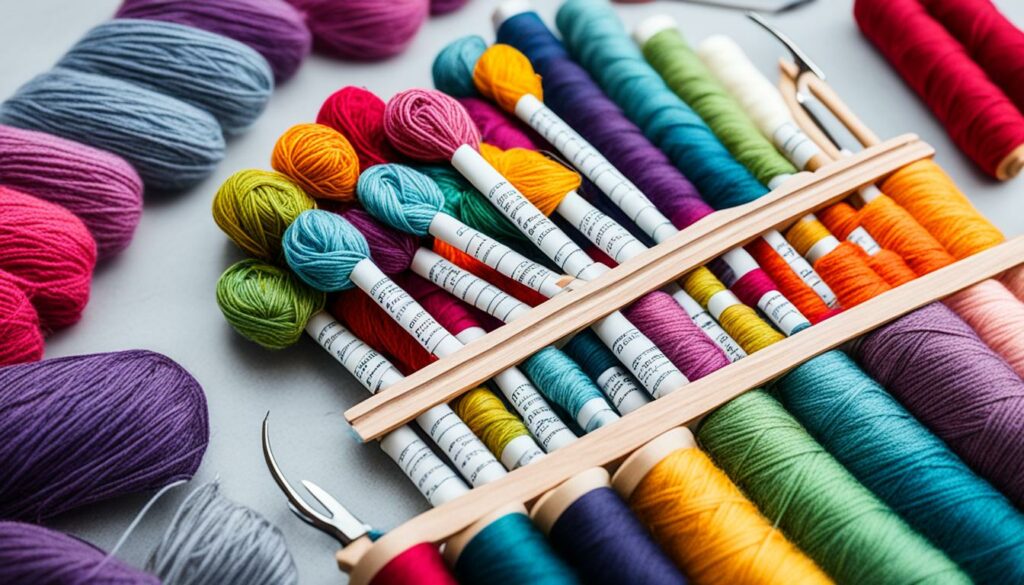
Comparison of Different Yarn Sources
| Retailer | Positive Aspects | Negative Aspects |
|---|---|---|
| Micheals | Affordable prices; coupon opportunities | Limited selection; availability may vary |
| Walmart | Convenient locations; affordable prices | May have limited color options |
| Joann’s | Wide selection; occasional sales | Can be more expensive compared to other sources |
| Tuftinggun.com | Specialized selection for tufting; quality products | Higher prices compared to general craft stores |
| Knitpicks.com | Large selection; varied price range | Shipping times may vary |
| Knitting-warehouse.com | Discounted prices; frequent sales | Some yarns may not be suitable for rug tufting |
| Yarnsparations.com | Diverse range of yarns; trusted brand | Shipping costs may apply |
| Lovecrafts.com | Large community; unique yarn options | Prices may be higher than other sources |
| Fabulousyarn.com | High-quality yarns; luxurious options | Can be more expensive compared to other sources |
Types of Tufting Guns for Rug Making
Rug tufting can be done using a tufting gun, a simple tool that allows even beginners to create professional-looking rugs. When choosing a tufting gun, it’s important to consider your desired rug style and level of experience. There are two main types of tufting guns to choose from:
1. Loop Pile Guns
Loop pile guns create rugs with a plush, luxurious appearance. These guns require more precision and manual cutting of the yarn as they do not automatically cut the loops. However, the extra effort pays off in terms of durability. Loop pile rugs are more resistant to wear and tear, making them suitable for high-traffic areas. The dense loops also provide a soft and comfortable texture underfoot. If you’re looking to create a rug with a classic, timeless look, a loop pile gun is a great choice.
2. Cut Pile Guns
Cut pile guns are easier to use and produce results with a more modern look. These guns automatically cut the loops, making them suitable for beginners or those who prefer a simpler tufting process. Cut pile rugs have a shorter pile height, which creates a sleek and polished appearance. They are often used for contemporary rugs or rugs with intricate geometric designs. If you’re a beginner or prefer a more contemporary rug style, a cut pile gun is the way to go.
Consider your personal preferences, the rug design you want to achieve, and your level of experience when selecting a tufting gun. Both loop pile and cut pile guns can create beautiful rugs, but the choice depends on the specific aesthetic and durability requirements of your project.
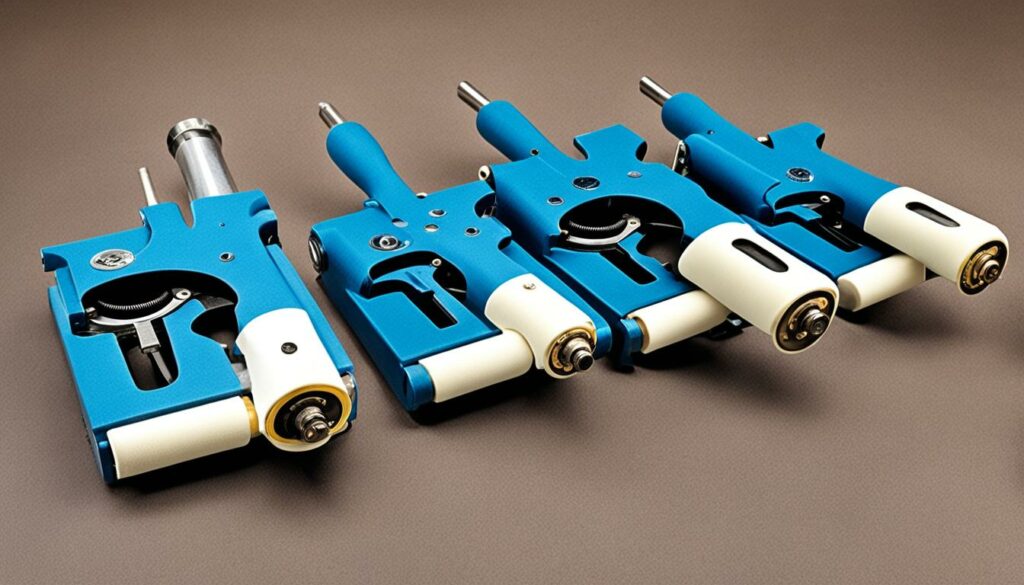
Building a Frame for Rug Tufting
When it comes to rug tufting, having a sturdy frame is essential to ensure the fabric stays in place throughout the tufting process. Building a frame is a relatively simple task that requires a few basic materials. Here’s how you can create your own frame:
- Start by gathering straight beams of the desired length and thickness for your rug. These beams will form the sides of the frame.
- Use a square to ensure the beams are at right angles to each other, creating a rectangular frame.
- Secure the beams together using screws or other fasteners, ensuring the frame is strong and stable.
- Consider the size of the rug you want to create when determining the dimensions of your frame. Keep in mind that the frame should accommodate the backing material you plan to use.
- Once the frame is assembled, attach the backing fabric to it. You can use carpet gripper rods or a staple gun to secure the fabric tightly.
- To guide the yarn and keep it away from the gears of the tufting gun, you can install eye hook screws along the frame’s edges.
By following these steps, you’ll have a solid frame that will provide the necessary support for your rug tufting project.
Selecting the Right Frame Size
When determining the size of your frame, it’s important to consider the available backing material. You want to ensure that the fabric fits tightly and evenly across the frame. If necessary, you can cut the fabric to size before attaching it to the frame. Remember, a well-fitted frame will help you achieve the best results in your rug tufting endeavors.
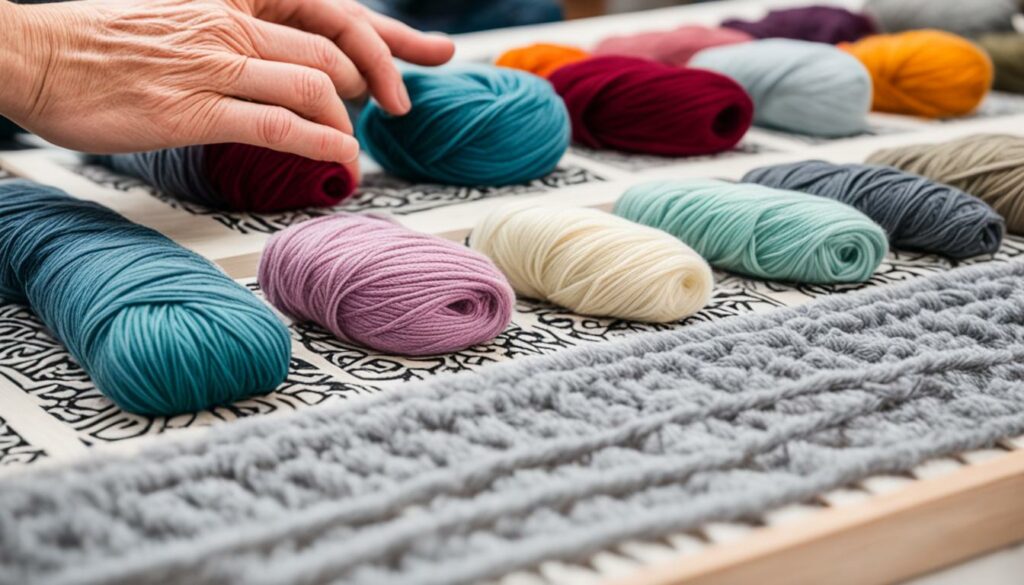
| Pros | Cons |
|---|---|
|
|
Having a well-built frame for rug tufting is crucial for achieving professional and consistent results. Take the time to construct a sturdy frame that suits your desired rug size, and you’ll be well on your way to creating beautiful tufted rugs.
Choosing Backing Fabric for Rug Tufting
When it comes to rug tufting, selecting the right backing fabric is crucial as it provides the necessary support for your tufted yarn. Several popular choices for backing fabric are burlap, linen, and monks cloth. Each option offers its own unique advantages, so it’s important to consider your budget and the desired finish of your rug when making a selection.
Burlap: Burlap is a cost-effective option that provides a rustic and natural look to your tufted rug. It is a loosely woven fabric made from jute fibers, which gives it a distinct texture. While burlap is a popular choice due to its affordability, it may not offer the same level of stability and evenness as other options.
Linen: Linen is a versatile and durable fabric that lends a more refined and elegant feel to your rug. It has a smooth texture and is known for its strength and durability. Linen can be a slightly more expensive option compared to burlap, but it offers better stability and evenness, making it a great choice for intricate designs or patterns.
Monks Cloth: Monks cloth is a heavyweight and tightly woven fabric that provides excellent support for rug tufting. It offers superior stability and evenness, resulting in a more professional-looking finished product. While monks cloth may be more expensive than burlap and linen, its quality and durability make it a preferred choice for many tufting enthusiasts.
When choosing between these backing fabric options, we recommend conducting small tests with different types of fabric to determine which one works best for your tufting process. Consider factors such as stability, evenness, and the overall aesthetic appeal you want to achieve with your rug..
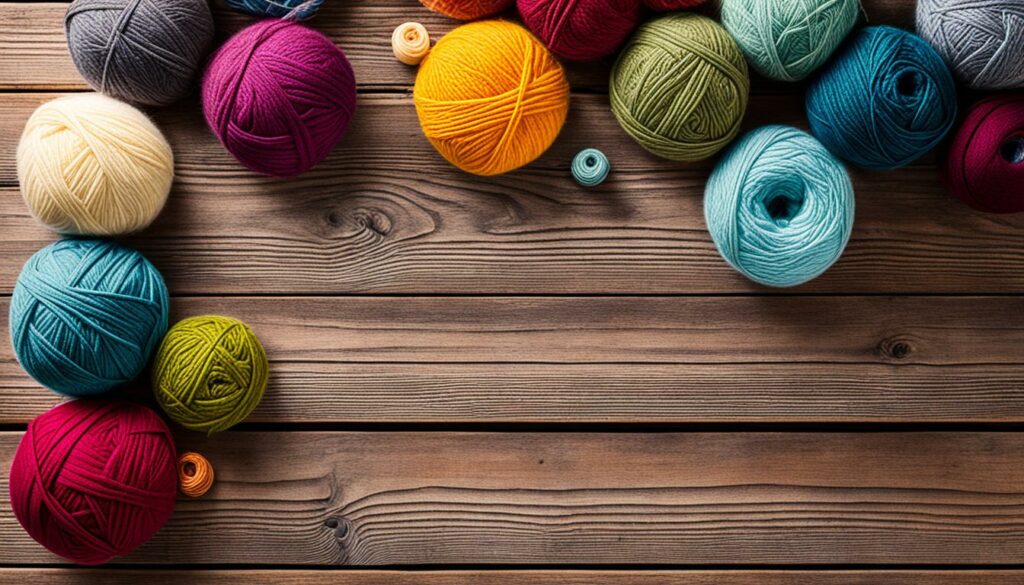
Taking the time to choose the right backing fabric for your rug tufting project ensures that your tufted yarn will have the necessary support to create a beautiful and durable rug. Whether you opt for the rustic charm of burlap, the refined elegance of linen, or the superior stability of monks cloth, experimenting with different fabric types will help you achieve the desired result and create a tufted rug that reflects your unique style.
Picking the Right Glue for Rug Tufting
When it comes to rug tufting, choosing the right glue is essential for securing the tufted yarn to the backing fabric. A strong and long-lasting bond is crucial to ensure the durability of your tufted rug. Let’s explore the different types of glue that can be used for rug tufting:
- Latex Glue: Latex glue is commonly used for rug tufting. It is readily available and easy to work with. However, it’s important to note that latex glue can degrade over time, which may affect the longevity of your rug.
- Polyvinyl Acetate (PVA) Glue: PVA glue is an affordable option for rug tufting. While it may not be as strong as other types of glue, it can still provide satisfactory results for less demanding projects.
- Synthetic Rubber Adhesive: Synthetic rubber adhesive, such as AAT 1132, is recommended for its strong and long-lasting bond. This type of glue is specifically formulated for rug tufting and offers superior durability.
When selecting a glue for rug tufting, it’s important to choose a high-quality adhesive that is suitable for the tufting process. Make sure to apply the glue to the back of the carpet while it is still stretched on the frame, ensuring proper adhesion.
Here’s an image that showcases the different glue options for rug tufting:
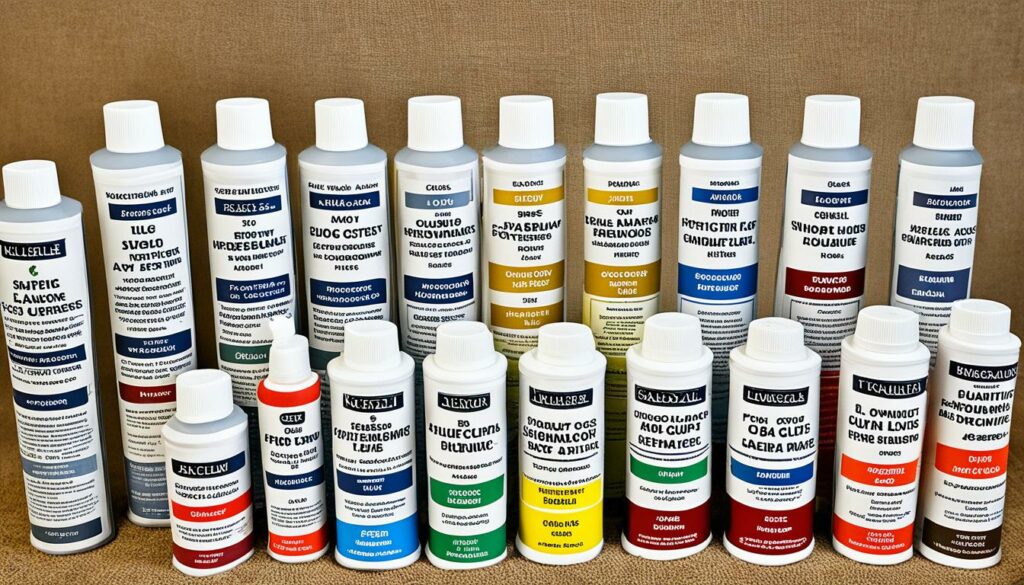
Now that you know the different glue options available, you can confidently pick the right one for your rug tufting project. Remember, a strong bond is the key to creating beautiful and long-lasting tufted rugs.
Tips and Tricks for Successful Rug Tufting
Rug tufting is an exciting and fulfilling process that can yield stunning results with the right techniques. Here are some valuable tips and tricks to enhance your rug tufting journey:
1. Find the Perfect Balance
Start by practicing with straight lines to get a feel for the ideal speed, pressure, and rhythm. Experiment with different gun positions to achieve consistent and smooth tufts. As you gain confidence, gradually progress to smaller curves and intricate designs.
2. Project Your Design
To ensure precise tufting, consider projecting your design onto the backing fabric. This helps you visualize the placement of the yarn strands and facilitates accurate execution. With a clear projection, you can achieve more intricate patterns and details.
3. Density Matters
Experiment with different arrangements of yarn strands to create varying levels of density in your rug. Placing strands close together produces a dense pile, perfect for a plush and luxurious finish. Alternatively, spacing the strands slightly apart can create a more textured look with visible gaps.
4. Minimize Mistakes
If you make a mistake during tufting, don’t worry! Use pliers to gently pluck out the misplaced yarn strand. This allows you to adjust strand placement without causing damage to the surrounding tufts. Take your time and work meticulously to achieve a flawless final result.
5. Maintain Your Equipment
Proper maintenance of your tufting gun is essential for optimal performance. Regularly clean the gun to remove any excess yarn fibers or debris that may clog the mechanism. Lubricate the moving parts as instructed by the manufacturer to ensure smooth and consistent tufting.
Pro Tip: Before each tufting session, double-check that you have enough yarn, sharp scissors, and a clean working area. This will help streamline your rug tufting process and prevent any unnecessary interruptions.
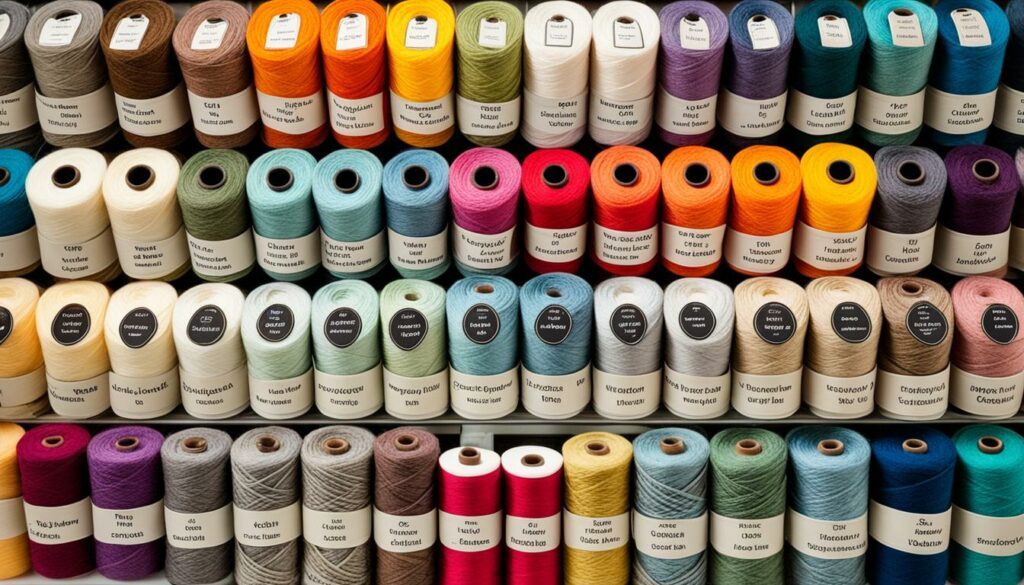
With these tips and tricks in your arsenal, you’re well-equipped to embark on your rug tufting adventure. Remember to enjoy the creative process and embrace the opportunity to create unique and beautiful rugs that will be cherished for years to come.
Conclusion
Rug tufting is an exciting and rewarding craft that allows you to create unique and durable rugs. One of the most crucial decisions you’ll make is choosing the right yarn for your tufting project. Acrylic, cotton, and wool yarns are the most commonly used options, each with its own advantages and considerations.
For ornamental projects, acrylic yarn is a great choice. It’s affordable, soft, and comes in a wide range of colors. If you’re looking for versatility and sustainability, cotton yarn is the way to go. It’s moderately soft and can be used for both wall pieces and rugs. When it comes to durability and tradition, wool yarn is unmatched. Though more expensive, it’s the ideal choice for floor rugs.
When selecting the yarn for your rug tufting project, consider the purpose of your rug, your budget constraints, and the desired qualities you’re looking for. Don’t be afraid to experiment and have fun with the process. With the right yarn and a bit of creativity, you can create beautiful and long-lasting tufted rugs that will be treasured for years to come.
